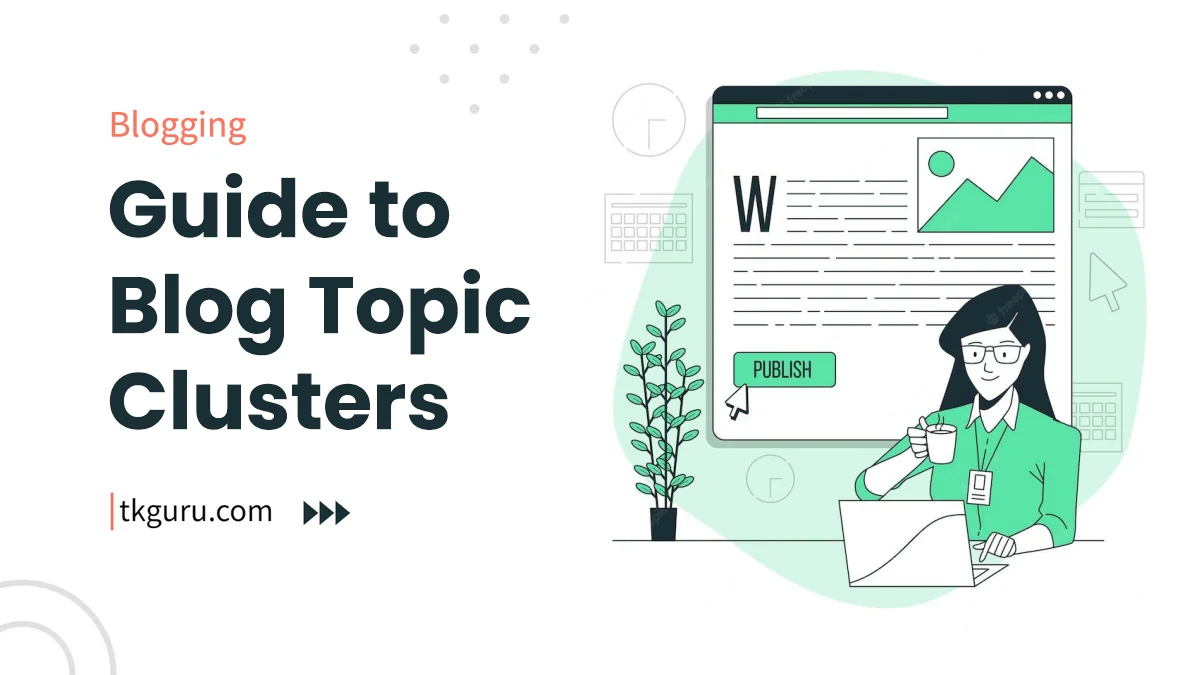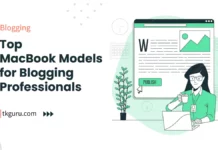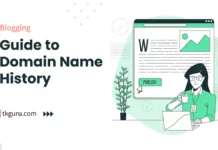Advertisements
Ratings

Blog Topic Clusters 2023 – In the dynamic world of digital marketing, mastering both content strategy and search engine optimization (SEO) is pivotal to online success.
The emergence of blog topic clusters has introduced a powerful framework that harmonizes these aspects, elevating online visibility, enhancing user experience, and augmenting content engagement.
In this exhaustive guide, we’ll delve into the intricacies of blog topic clusters, their manifold benefits, and the strategic approach to effectively implement them, resulting in a robust content strategy.
Contents
- 1. Understanding Blog Topic Clusters
- 2. Benefits of Using Blog Topic Clusters
- 3. Keyword Research and Topic Selection
- 4. Creating Pillar Content
- 5. Developing Cluster Content
- 6. Internal Linking Strategies
- 7. Optimizing for Search Engines
- 8. Monitoring and Analyzing Performance
- 9. Adapting and Updating Clusters
- 10. Case Study: Wanderlust Explorer
- 11. The Future of Blog Topic Clusters
- Conclusion
1. Understanding Blog Topic Clusters
In the traditional approach, individual blog posts centered around specific keywords, often leading to disjointed content.
Blog topic clusters introduce a systematic strategy that consists of two key components: pillar content and cluster content.
At the heart of blog topic clusters is the pillar-cluster model, which emphasizes the cohesive relationship between content pieces, augmenting both user experience and SEO efforts.
Visual representation of the Pillar-Cluster Model:

2. Benefits of Using Blog Topic Clusters
The integration of blog topic clusters offers an array of benefits to users and search engines alike.
- Enhanced User Experience: Blog topic clusters provide users with a comprehensive resource hub that seamlessly guides them from general information (pillar content) to more specific details (cluster content). This structured approach not only enhances user experience but also encourages longer on-site engagement.
- Elevated SEO Impact: In a landscape where search engines value relevance and comprehensiveness, blog topic clusters excel. By presenting a pillar page covering a broad topic and accompanying cluster content addressing specific facets, you effectively communicate semantic relevance, leading to improved search engine rankings.
- Amplified Search Engine Rankings: Through the optimization of both pillar and cluster content, search engines recognize the expertise and authority you’ve established on the subject. This, in turn, contributes to higher rankings across a range of relevant keywords.
3. Keyword Research and Topic Selection
The foundation of blog topic clusters rests upon comprehensive keyword research and strategic topic selection.
Utilizing tools like Google Keyword Planner, SEMrush, or Ahrefs proves invaluable in identifying pertinent keywords and assessing their search volumes.
- Pillar Keyword: Choose a high-volume, overarching keyword that encapsulates the core theme of your pillar content.Example: If your niche is fitness, your pillar keyword could be “Healthy Meal Planning.”
- Cluster Keywords: Identify long-tail keywords and related terms that naturally complement the broader topic. These keywords should address specific user queries.Example: For the fitness niche, cluster keywords could include “Low-Carb Breakfast Recipes” or “Vegan Lunch Ideas.”
4. Creating Pillar Content
The cornerstone of the blog topic cluster is the pillar content. This piece should be all-encompassing, meticulously researched, and expertly crafted.
- Thorough Exploration: Immerse yourself in the chosen pillar topic, delving into all related subtopics and angles.Example: In the context of “Healthy Meal Planning,” your pillar content might cover nutrition fundamentals, meal prep techniques, and dietary considerations.
- Comprehensive Resource: Your pillar content should offer substantial value to users by addressing their queries comprehensively and providing actionable insights.Example: Within your “Healthy Meal Planning” pillar, include meal prep tips, ingredient guides, and suggestions for maintaining balanced diets.
- Multimedia Integration: Enhance user engagement and understanding by incorporating multimedia elements such as images, infographics, videos, and interactive components.Example: Include visually appealing infographics showcasing portion sizes and nutrient breakdowns for different meals.
5. Developing Cluster Content
Cluster content complements the pillar by diving deeper into specific aspects. Each cluster article concentrates on a particular facet linked to the broader theme.
- Diverse Subtopics: Identify niches within your pillar topic that warrant in-depth exploration.Example: Within the “Healthy Meal Planning” context, cluster content could focus on “Quick Breakfast Ideas,” “Family-Friendly Dinners,” or “Post-Workout Snacks.”
- Content Strategy: Map out a content plan outlining each cluster article, specifying the target keyword, and elucidating its connection to the pillar content.Example: For the “Quick Breakfast Ideas” cluster, your target keyword could be “Easy Breakfast Recipes,” and the content would provide quick and nutritious breakfast options.
- Value-Centric Approach: Every cluster article should contribute unique insights, practical suggestions, or detailed analysis that complements the overarching pillar content.Example: In the “Family-Friendly Dinners” cluster, offer recipes that cater to the preferences of children and provide tips for balancing nutritional requirements.
6. Internal Linking Strategies
Strategic internal linking is a linchpin within the pillar-cluster framework, fortifying connections between various content pieces.
- Strategic Link Placement: Within cluster articles, incorporate links leading back to the corresponding pillar content, lending authority to the broader theme.Example: In your “Quick Breakfast Ideas” article, link back to the main “Healthy Meal Planning” pillar to provide a holistic view of meal planning.
- Pillar-to-Cluster Linking: Within the pillar content, direct readers to the cluster articles that offer deeper insights into specific subtopics.Example: Within the “Healthy Meal Planning” pillar, direct readers to the cluster content focusing on “Family-Friendly Dinners.”
- Descriptive Anchor Text: Utilize descriptive anchor text that aligns contextually with the content it leads to, ensuring seamless navigation for users.Example: Instead of “Click here for more,” use “Explore our guide to Quick Breakfast Ideas.”
7. Optimizing for Search Engines
Both pillar and cluster content should undergo optimization to maximize their visibility and impact on search engines.
- On-Page SEO Practices: Implement target keywords, optimize meta tags, and structure headers to signal content relevance to search engines.Example: In your “Healthy Meal Planning” pillar, ensure the target keyword is seamlessly integrated into headings, subheadings, and meta descriptions.
- Mobile Responsiveness: Given the emphasis on mobile browsing, ensure your content is optimized for various devices, as mobile-friendly sites are favored by search engines.
- Page Load Speed: Swift-loading pages contribute not only to user satisfaction but also positively impact search engine rankings.
8. Monitoring and Analyzing Performance
Leverage tools like Google Analytics and Google Search Console to meticulously track the performance of both pillar and cluster content.
- Organic Traffic Tracking: Monitor organic traffic directed to both pillar and cluster articles to gauge their popularity and overall impact.
- Keyword Ranking Analysis: Assess the keyword rankings of the pillar content and cluster articles to ascertain their visibility within search engine results.
- User Engagement Metrics: Delve into metrics such as bounce rates, time spent on page, and click-through rates to gain insights into user interaction patterns.
9. Adapting and Updating Clusters
In the digital realm, content is an evolving entity. Blog topic clusters require ongoing maintenance and updates to remain relevant.
- Continuous Vigilance: Stay attuned to shifts in user behavior, emerging trends, and alterations in search engine algorithms.
- Cluster Content Updates: As knowledge advances, ensure your cluster content remains accurate and pertinent by periodically updating it.
- Expanding Pillar Content: Should new dimensions emerge within the broader topic, consider extending the pillar content to encompass these emerging facets.
10. Case Study: Wanderlust Explorer
In this case study, we’ll delve into the implementation of the Pillar-Cluster Model by a fictional travel website, “Wanderlust Explorer,” to demonstrate how this strategic approach can drive organic traffic growth and establish the site as an authoritative resource in the travel niche.
10.1 Understanding the Pillar-Cluster Model
The Pillar-Cluster Model is a content strategy that revolves around creating comprehensive, pillar content pieces that serve as authoritative guides on broad topics.
These pillar pieces are supported by related, interlinked cluster content that covers specific subtopics in detail, forming a content ecosystem that provides value to both users and search engines.
10.2 Applying the Pillar-Cluster Model
A. Pillar Content Creation
- Pillar Topic: “Ultimate Guide to Backpacking Around the World”
- Comprehensive Guide: An in-depth, long-form pillar article is created, covering every aspect of backpacking, including planning, packing, budgeting, and safety tips.
- Multimedia Integration: The pillar piece includes images, infographics, and videos to enhance engagement and user experience.
B. Cluster Content Creation
| Cluster Topic | Interlinked with Pillar | Comprehensive Content |
|---|---|---|
| “Essential Gear for Backpacking” | Linked from Pillar’s Gear Section | Detailed list of must-have backpacking gear |
| “Budget-Friendly Accommodations” | Linked from Pillar’s Budget Section | Comparison of budget accommodations worldwide |
| “Safety Tips for Solo Travelers” | Linked from Pillar’s Safety Section | In-depth guide on staying safe while traveling alone |
10.3 Content Interlinking and Hierarchy
- The pillar article serves as the cornerstone, interlinked with cluster content through contextual and relevant anchor texts.
- Cluster content pieces link back to the pillar article, reinforcing its authority and creating a seamless user journey.
10.4 SEO Benefits and User Experience
- Enhanced Relevance: The Pillar-Cluster approach aligns with search engine algorithms, signaling to search engines the comprehensive coverage of a topic.
- User-Friendly Navigation: Clear interlinking guides users through related content, promoting longer on-site sessions and improved user engagement.
10.5 Monitoring and Analytics
- Traffic Growth: Regularly monitoring organic traffic growth using Google Analytics to measure the effectiveness of the Pillar-Cluster Model.
- Keyword Rankings: Tracking the rise of pillar and cluster content in search engine rankings for targeted keywords.
10.6 Results and Impact
- Organic Traffic Surge: Over a six-month period, Wanderlust Explorer experienced a 40% increase in organic traffic, driven by the Pillar-Cluster content strategy.
- Improved Authority: The pillar article, “Ultimate Guide to Backpacking Around the World,” gained backlinks from travel enthusiasts and bloggers, establishing the website as an authoritative source in the travel niche.
10.7 Lessons Learned
- Keyword Research: Comprehensive keyword research is essential for identifying potential pillar and cluster topics.
- Consistency: Regularly updating and adding new cluster content ensures the content ecosystem remains relevant and up-to-date.
- User-Centric Approach: Focusing on user intent when crafting pillar and cluster content enhances user satisfaction and engagement.
The case study of “Wanderlust Explorer” exemplifies the power of the Pillar-Cluster Model in driving organic traffic growth and establishing authority in a competitive niche.
By strategically creating pillar content supported by interlinked cluster content, the website successfully provided valuable information to users and search engines alike.
This case study serves as an inspiration for website owners looking to optimize their content strategy, enhance user experience, and elevate their online presence through a structured and effective approach.
11. The Future of Blog Topic Clusters
The trajectory of blog topic clusters harmonizes seamlessly with the changing landscape of search engines and user behavior.
- Semantic Search Evolution: As search engines deepen their focus on comprehending user intent and context, blog topic clusters cater to this evolution by providing comprehensive, semantically relevant content.
- User-Centric Continuity: The user experience remains paramount. Blog topic clusters streamline the user journey, cultivating engagement by guiding users through a coherent content expedition.
- Algorithmic Progression: As search engine algorithms advance, content that caters to user intent and provides substantial value is poised to retain its relevance and significance.
Conclusion
The integration of SEO and content strategy through the blog topic cluster framework underscores an advanced approach to enhancing online visibility and user engagement.
By crafting comprehensive pillar content and augmenting it with specialized cluster articles, you carve your path to becoming an authoritative voice within your niche while satisfying the demands of both users and search engines.
As the digital landscape continues its evolution, the adoption of this strategy emerges as a pivotal stride toward achieving enduring online triumph.
Blog Topic Clusters FAQs
What are blog topic clusters, and why are they important for SEO?
Blog topic clusters are a content strategy where you create a pillar page as the main topic and link related subtopics or articles to it. They are important for SEO because they help search engines understand the depth and relevance of your content, improving your site's visibility and authority.
How do I create a blog topic cluster?
Start by identifying a broad pillar topic that's relevant to your niche. Create a comprehensive pillar page on that topic. Then, choose subtopics or related keywords to create in-depth content pieces that link back to the pillar page.
What's the benefit of interlinking between pillar content and cluster content?
Interlinking between pillar and cluster content helps search engines discover and index your content more effectively. It also creates a logical content structure for readers, encouraging them to explore related topics on your blog.
How should I optimize a pillar page for SEO?
Optimize your pillar page by including comprehensive information, using relevant keywords naturally, optimizing images, and ensuring a user-friendly layout. Internal and external linking can also enhance the page's authority.
Can I create blog topic clusters for any niche or industry?
Yes, blog topic clusters can be applied to virtually any niche or industry. They are particularly beneficial when you have a broad topic that you want to cover comprehensively while also addressing specific subtopics and long-tail keywords within that niche.
| Web Hosting | Website |
| WordPress | Google Adsense |
| SEO | Affiliate Marketing |
| Blogging | YouTube |
Recent Posts:
- Windows vs Mac: Choosing the Ideal Laptop for Your Needs
- 10 Best Budget Friendly Laptops for Bloggers with Impressive Performance
- Top MacBook Models for Blogging Professionals
- 10 Best Laptops for Content Creators in 2023
Related Tags:






